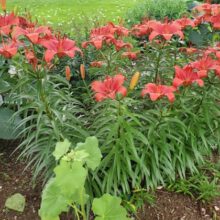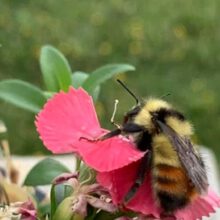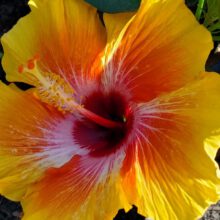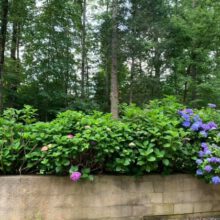How Do I Begin My Exotic Garden?
It is important, when you have decided to do exotic gardening for yourself, that you know that exotic gardening is new and that you will have to gather or look up a lot of information. But fear not, many are already working on it and a lot of information is already available via the Internet and other channels. You may also have ended up on this website in this way.
More info about starting an exotic garden:
One of the most important factors in exotic gardening is the location, it is very important where you will place a specific plant. Which parts of your garden are in shade, which are in full sun, where is the south side, north side and which parts are in open wind or well protected. Depending on this you can determine where you will put which plant. You can still play with the placement later, but keep it in mind in the beginning, because it determines the success of your exotic garden. In addition, do you also have to take into account the size of a plant and the space it needs to fully develop? This is extremely important, otherwise you may find yourself in a lack of space. Through the available information channels on the internet and reliable traders, you can gather a lot of useful information.
Maintenance of an exotic garden.
This is not so bad and depends on the plants you choose to place in your garden. When you take the most “frost resistant plants”, you have little work. The works that recur in an ordinary native garden are also repeated here like fertilize, sometimes prune, occasionally provide extra water, and so on.
In winter, depending on the hardness of winter and the combination of cold and moisture, it may be necessary to intervene and the plants help winter get through well. This can be done with simple protective equipment, such as reed mats, non-woven cloth, bubble wrap, and others.
Ideal starting plants:
For this selection we took into account the many possibilities, the popularity and also the frost resistance of the plants; these are plants that require the least care in winter or are the easiest to maintain in winter.
1. Among the palm trees, the “Trachycarpus Fortunei” or the Chinese windmill palm is undoubtedly a big favorite. This palm is originally from Southeast Asia, they even occur in the Himalayas. It is one of the most popular and stronger palms. It can tolerate winter temperatures down to about -15 ° C. Here in this region it should not normally be protected.
2. In an exotic garden, a banana plant or “Musa Basjoo” fits perfectly, this banana variety comes from Asia like China, India, etc., where they grow at great heights of the Himalayas. There they also have their strength to hibernate in our climate. This fiber banana can reach 4 meters in height, produces side shoots and its beautiful, large green leaves are a pleasure in the garden. After about four years, the first flower with any fruits can be obtained. With this plant it is necessary to provide sufficient winter protection in winter. By the way, did you know that in Belgium KU Leuven has the largest world collection of bananas, in order to keep the banana diversity alive. In total there are 1175 different species.
3. Ficus carica: The fig tree is originally from Southern Europe, North Africa. Several varieties of the fig tree are hardy when placed on a south wall. There they will grow without problems to lush trees that produce many figs every year. In maintenance this is also an easy plant, you can prune it to the shape you want in the autumn and it will sprout back in the spring.
4. A good exotic to start with in the garden is the “Chamaerops Humilis” also called “European fan palm”, it is a very special and beautiful palm native to Southern Europe and North Africa. It tolerates a winter temperature of -10 ° C and has already proven its robustness and frost resistance. This plant likes to stand with it’s own roots dry, in both winter and summer.



